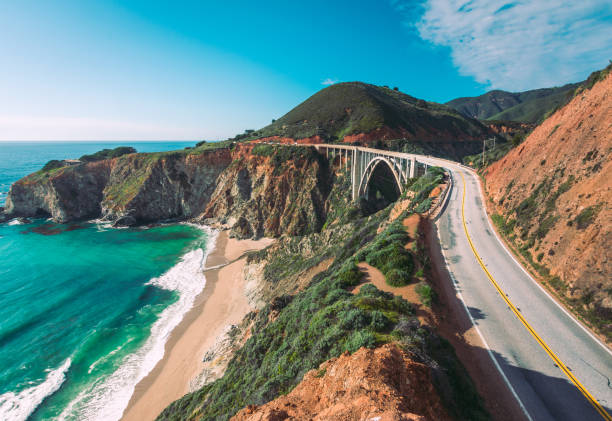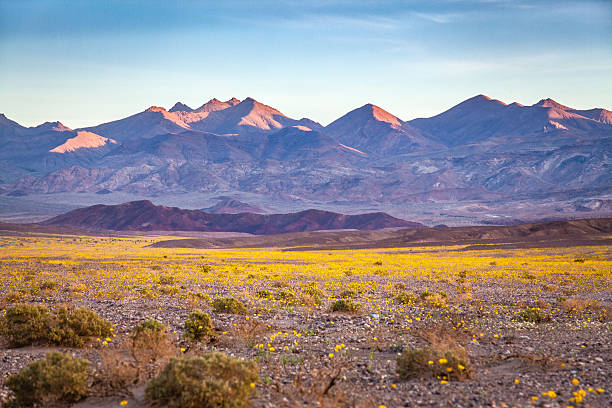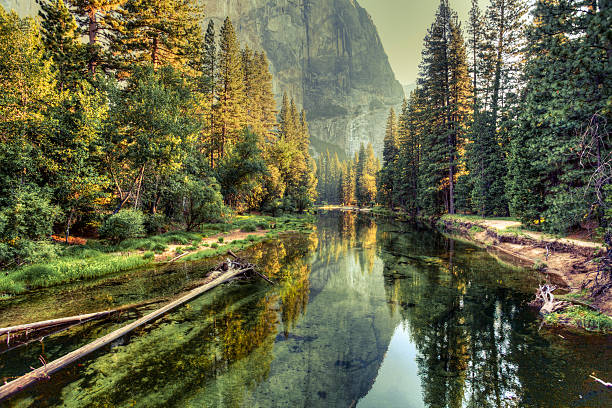California, known as the Golden State, is one of the most dynamic and influential regions in the United States. Located on the West Coast, it is celebrated for its stunning landscapes,
diverse culture, technological innovation, and economic prowess. With a population exceeding 39 million, California is the most populous state in the USA and the third-largest by area. This article delves into the geography, history, culture, economy, and other facets that define this remarkable state.
Geography and Climate
California's geography is as diverse as its people. Stretching from the Pacific Ocean in the west to the Sierra Nevada mountains in the east, the state encompasses a range of landscapes including deserts, valleys, forests, and coastal regions. It shares borders with Oregon to the north, Nevada and Arizona to the east, and Mexico to the south.
Key Geographical Features
Coastline: California boasts a 1,100-mile-long coastline along the Pacific Ocean. It is home to iconic beaches like Malibu, Santa Monica, and Big Sur.
Mountain Ranges: The Sierra Nevada mountain range includes Mount Whitney, the highest peak in the contiguous United States.
Valleys: The Central Valley, a fertile agricultural hub, is one of the most productive farming regions in the world.
Deserts: The Mojave Desert and Death Valley, the latter being the hottest place in North America, are located in the southeastern part of the state.
Forests: California's redwood forests, home to some of the tallest trees on Earth, are globally renowned.
Climate Variability
California experiences a wide range of climates due to its geographical diversity. Coastal areas enjoy a Mediterranean climate with mild, wet winters and dry summers, while inland regions experience more extreme conditions. The deserts have scorching summers and mild winters, and the mountainous areas receive significant snowfall, making them popular for winter sports.
Historical Overview
California’s history is rich and complex, shaped by indigenous cultures, colonial influences, and the Gold Rush.
Indigenous Inhabitants
Before European exploration, California was home to a diverse array of Native American tribes, including the Chumash, Miwok, and Yurok. These groups thrived for thousands of years, developing complex societies and sustainable ways of living.
Spanish Colonisation
In 1542, Juan Rodríguez Cabrillo became the first European to explore California. The Spanish established missions, presidios, and pueblos throughout the 18th century, aimed at converting Native Americans to Christianity and consolidating their territorial claims.
Mexican Rule and American Acquisition
After Mexico gained independence from Spain in 1821, California became a Mexican territory. However, the region’s control changed hands during the Mexican-American War, and in 1848, California was ceded to the United States under the Treaty of Guadalupe Hidalgo. The discovery of gold at Sutter’s Mill in 1848 sparked the California Gold Rush, attracting thousands of prospectors and transforming the state’s economy and demographics.
Statehood
California was admitted as the 31st state of the United States on September 9, 1850. Its rapid growth and development over the following decades cemented its status as a vital part of the nation.
Economy
California is the economic powerhouse of the United States, with a Gross State Product (GSP) surpassing $4 trillion, making it the fifth-largest economy globally if it were a country.
Major Industries
Technology: Silicon Valley, located in the San Francisco Bay Area, is the global hub for technology and innovation. Companies like Apple, Google, and Facebook have their headquarters here.
Entertainment: Hollywood, the heart of the global entertainment industry, produces a significant share of the world’s films and television shows.
Agriculture: California leads the nation in agricultural production, providing over a third of the country’s vegetables and two-thirds of its fruits and nuts.
Tourism: Iconic landmarks such as Disneyland, Yosemite National Park, and the Golden Gate Bridge make California a top tourist destination.
Renewable Energy: The state is a leader in solar and wind energy production, aligning with its commitment to combating climate change.
Trade and Commerce
California’s ports, including the Port of Los Angeles and the Port of Long Beach, are among the busiest in the world, facilitating trade with Asia and other global markets.
Demographics and Culture
California’s diverse population is one of its defining characteristics. People from all over the world have made the state their home, contributing to its rich cultural tapestry.
Demographic Composition
Ethnic Diversity: California is a majority-minority state, with significant Hispanic, Asian, and African American communities.
Languages: Over 200 languages are spoken, with English and Spanish being the most common.
Urban Centres: Major cities like Los Angeles, San Francisco, San Diego, and Sacramento are cultural and economic hubs.
Cultural Contributions
California’s culture is a blend of influences, reflected in its cuisine, art, and lifestyle. The state is known for its progressive values, fostering movements in civil rights, environmentalism, and technology. Festivals like Coachella and film events like the Oscars highlight its global cultural impact.
Education and Innovation
California is home to world-class educational institutions, including the University of California (UC) and California State University (CSU) systems. Stanford University and the California Institute of Technology (Caltech) are globally recognised for their contributions to research and innovation.
The state’s emphasis on education and technology has made it a leader in fields like artificial intelligence, biotechnology, and space exploration. Companies such as SpaceX and Tesla exemplify California’s pioneering spirit.
Natural Wonders and Tourism
California’s natural beauty attracts millions of visitors annually.
National Parks.
Yosemite National Park: Known for its granite cliffs, waterfalls, and giant sequoias.
Sequoia and Kings Canyon National Parks: Home to towering sequoia trees, including the General Sherman Tree.
Death Valley National Park: Famous for its extreme temperatures and unique desert landscapes.
Joshua Tree National Park: A favourite for rock climbing and stargazing.
Iconic Landmarks
Golden Gate Bridge: An engineering marvel in San Francisco.
Disneyland Resort: A world-famous theme park in Anaheim.
Hollywood Walk of Fame: Celebrating the legends of the entertainment industry.
Alcatraz Island: A historic site and former prison in San Francisco Bay.
Challenges and Future Outlook
Despite its many strengths, California faces significant challenges.
Environmental Issues
The state is particularly vulnerable to wildfires, droughts, and rising sea levels. Efforts to combat climate change include ambitious renewable energy goals and conservation initiatives.
Housing and Inequality
California’s high cost of living and housing crisis have contributed to growing income inequality and homelessness, particularly in urban areas like Los Angeles and San Francisco.
Infrastructure and Traffic
The state’s aging infrastructure and notorious traffic congestion require ongoing investment and innovative solutions.
Commitment to Progress
California continues to lead in addressing these challenges, leveraging its resources, creativity, and resilience to shape a brighter future.
Conclusion
California’s influence extends far beyond its borders. As a land of opportunity and innovation, it embodies the American dream while embracing diversity and progressiveness. From its natural wonders to its cultural landmarks, the Golden State remains a beacon of inspiration for millions around the world. Whether you’re drawn to its sunny beaches, towering mountains, or bustling cities, California offers something for everyone, making it truly one of a kind.
California is renowned for its high-quality agricultural products, and dry fruits are no exception.
The state's ideal climate and fertile soil produce a variety of delicious and nutritious dry fruits. Some of the most popular include almonds, walnuts, pistachios, and raisins. These dry fruits are packed with essential nutrients, including fiber, vitamins, and minerals, making them a healthy addition to any diet. Whether enjoyed as a snack or incorporated into various dishes, California dry fruits offer a taste of the Golden State's natural bounty.
Read More about California






No comments:
Post a Comment